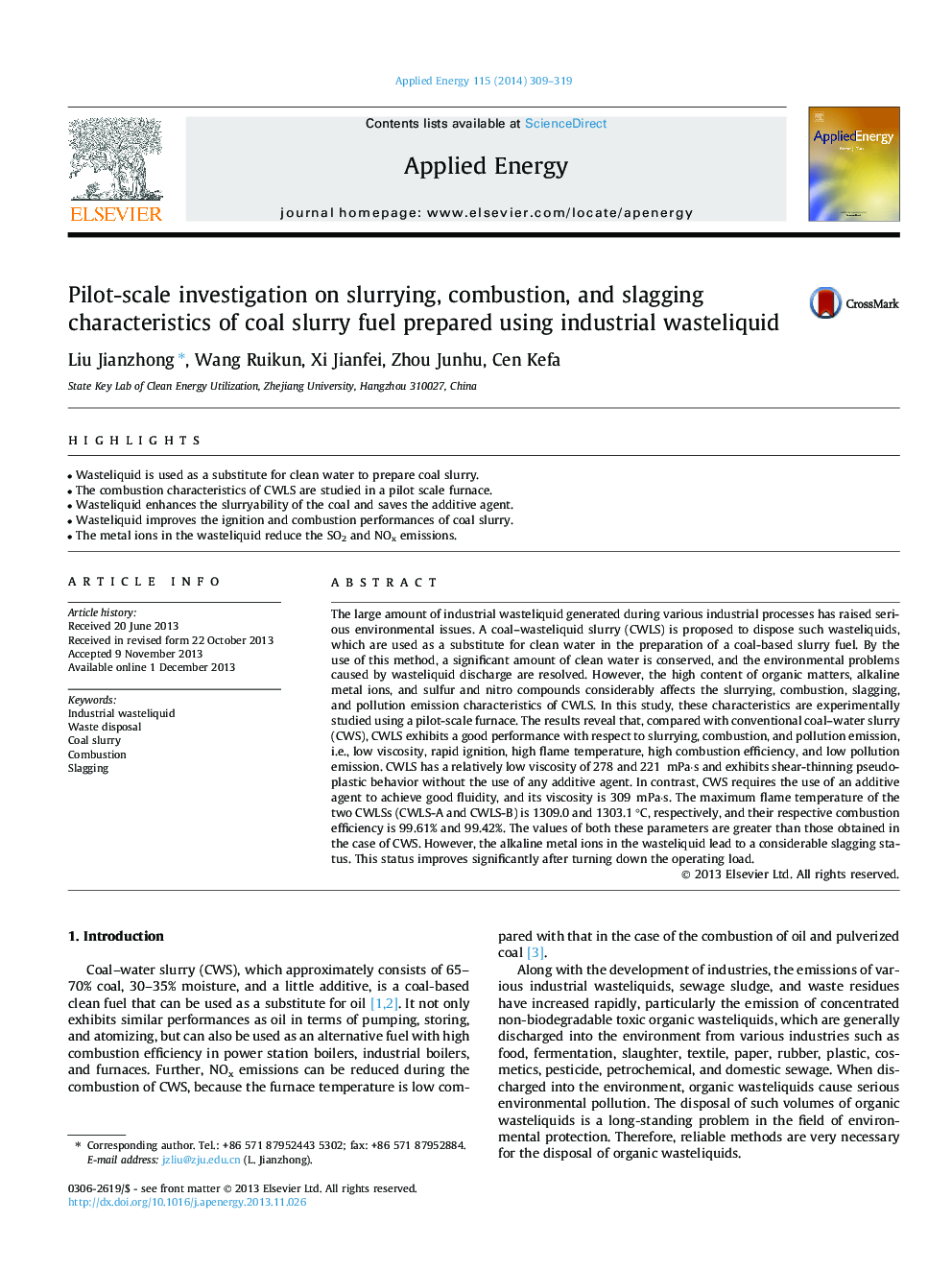| Article ID | Journal | Published Year | Pages | File Type |
|---|---|---|---|---|
| 6691364 | Applied Energy | 2014 | 11 Pages |
Abstract
The large amount of industrial wasteliquid generated during various industrial processes has raised serious environmental issues. A coal-wasteliquid slurry (CWLS) is proposed to dispose such wasteliquids, which are used as a substitute for clean water in the preparation of a coal-based slurry fuel. By the use of this method, a significant amount of clean water is conserved, and the environmental problems caused by wasteliquid discharge are resolved. However, the high content of organic matters, alkaline metal ions, and sulfur and nitro compounds considerably affects the slurrying, combustion, slagging, and pollution emission characteristics of CWLS. In this study, these characteristics are experimentally studied using a pilot-scale furnace. The results reveal that, compared with conventional coal-water slurry (CWS), CWLS exhibits a good performance with respect to slurrying, combustion, and pollution emission, i.e., low viscosity, rapid ignition, high flame temperature, high combustion efficiency, and low pollution emission. CWLS has a relatively low viscosity of 278 and 221Â Â mPaâ
s and exhibits shear-thinning pseudoplastic behavior without the use of any additive agent. In contrast, CWS requires the use of an additive agent to achieve good fluidity, and its viscosity is 309Â Â mPaâ
s. The maximum flame temperature of the two CWLSs (CWLS-A and CWLS-B) is 1309.0 and 1303.1 °C, respectively, and their respective combustion efficiency is 99.61% and 99.42%. The values of both these parameters are greater than those obtained in the case of CWS. However, the alkaline metal ions in the wasteliquid lead to a considerable slagging status. This status improves significantly after turning down the operating load.
Related Topics
Physical Sciences and Engineering
Energy
Energy Engineering and Power Technology
Authors
Liu Jianzhong, Wang Ruikun, Xi Jianfei, Zhou Junhu, Cen Kefa,
